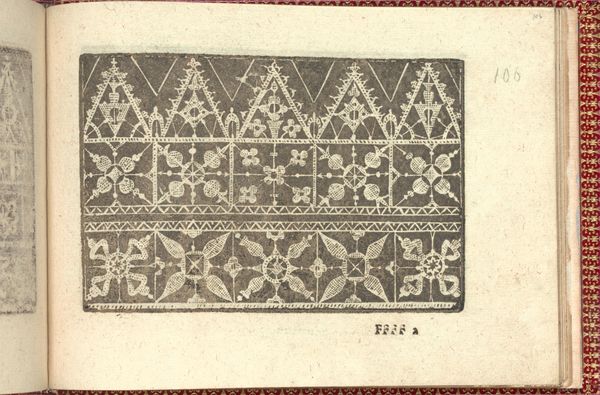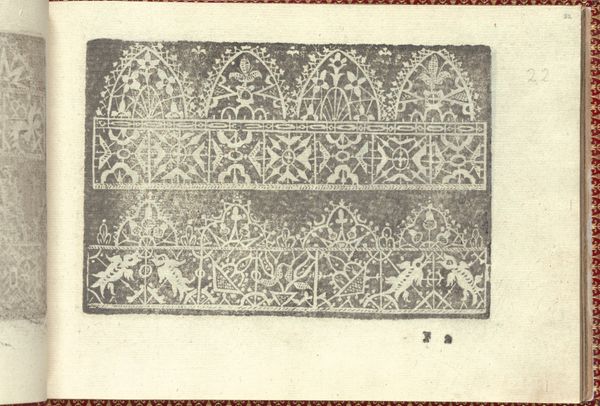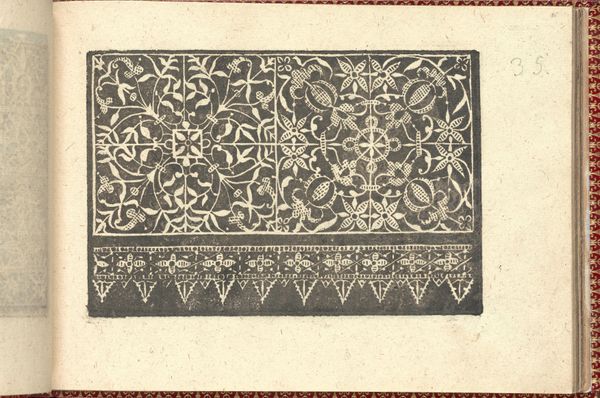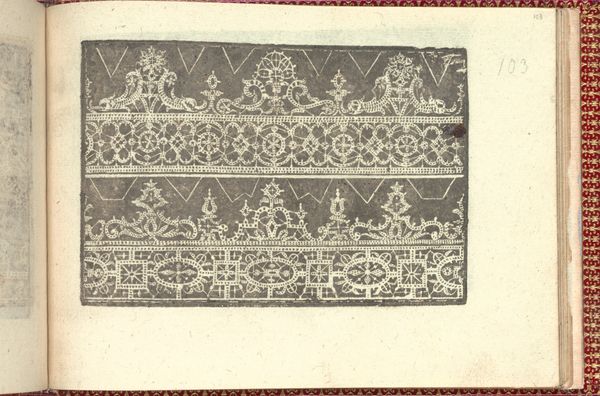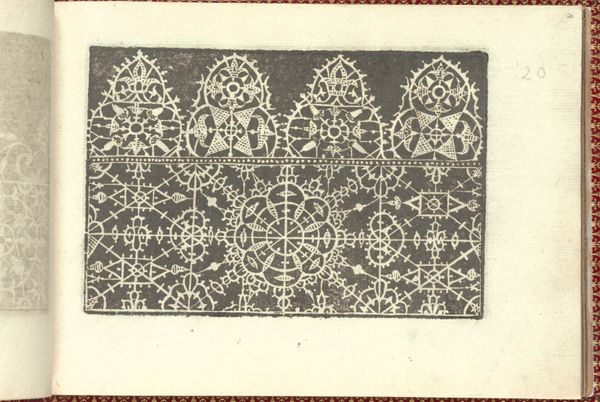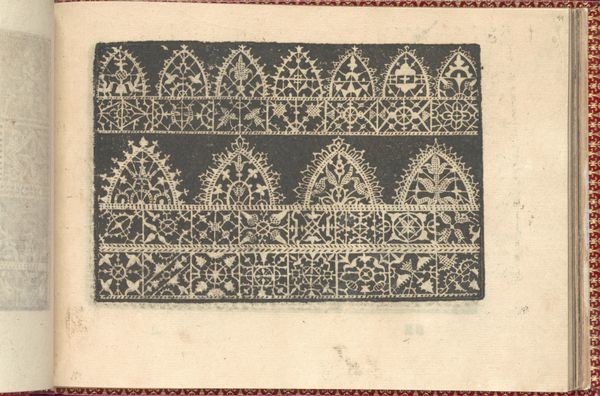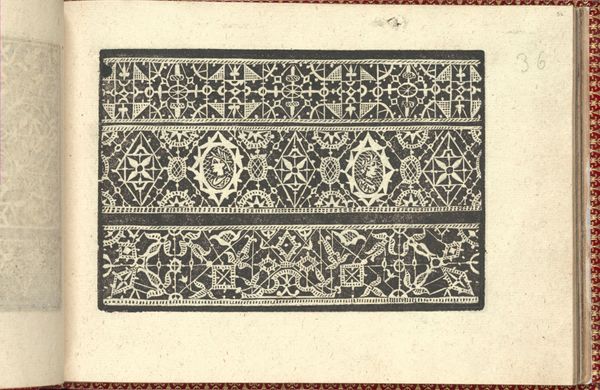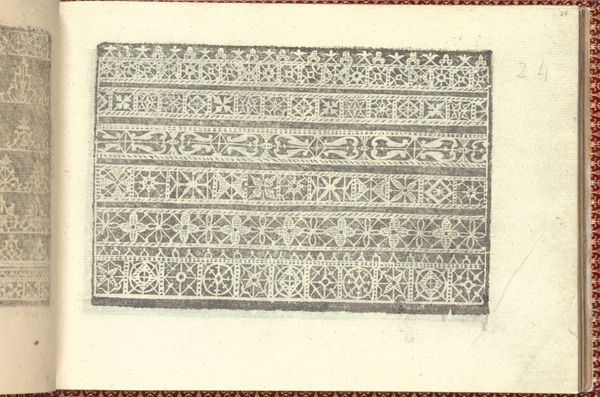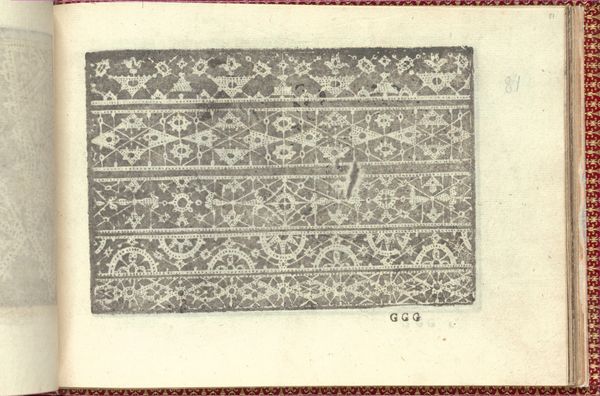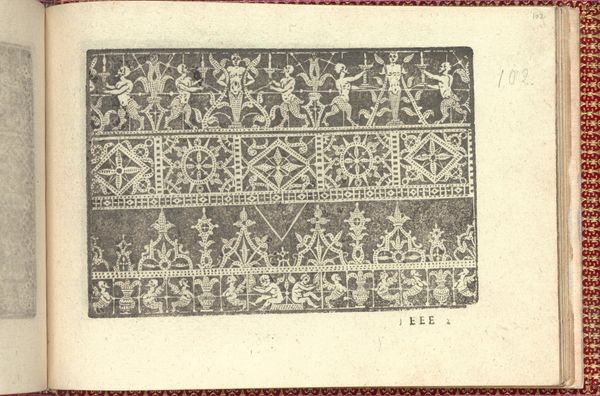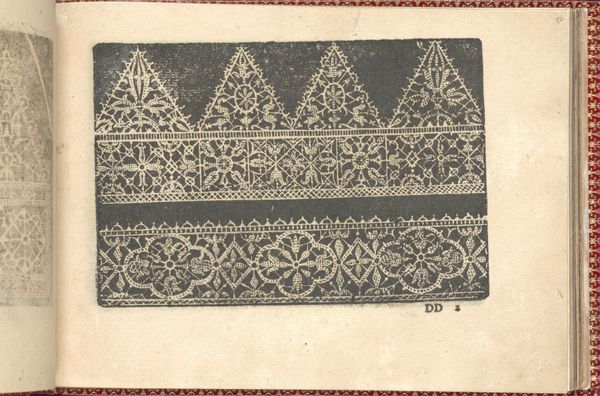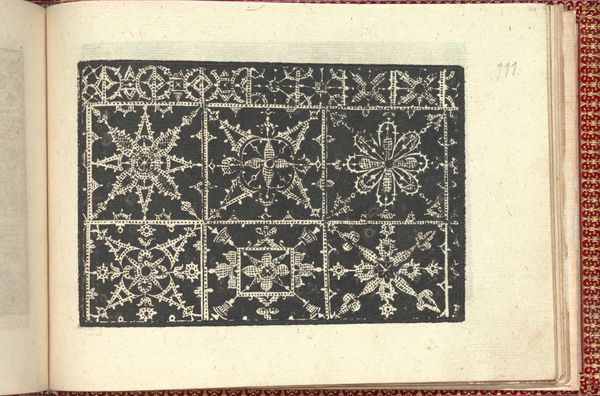
Corona delle Nobili et Virtuose Donne: Libro I-IV, page 108 (recto) 1601
0:00
0:00
drawing, ornament, print, paper, engraving
#
drawing
#
aged paper
#
ornament
#
toned paper
#
ink paper printed
# print
#
book
#
sketch book
#
paper
#
personal sketchbook
#
decorative-art
#
italian-renaissance
#
italy
#
engraving
Dimensions: Overall: 5 1/2 x 7 11/16 in. (14 x 19.5 cm)
Copyright: Public Domain
Editor: Here we have a page from "Corona delle Nobili et Virtuose Donne: Libro I-IV" by Cesare Vecellio, created in 1601. It’s an engraving printed on paper and shows different lace patterns. It feels very intricate and almost mathematical in its precision. How do you interpret this work? Curator: Well, these weren't just patterns; they were potent symbols of status and access in a highly stratified society. Consider this: lace-making, although deemed ‘domestic,’ provided women an income, a voice, in a time where those were actively suppressed. The "Corona delle Nobili et Virtuose Donne" translates to "Crown of Noble and Virtuous Women", and these books acted as pattern books – manuals even – granting entry, of sorts, to the visual language of the elite. Does the repetitive, almost regimented structure suggest anything to you? Editor: Maybe it represents the constraints placed on women, even as they participate in this 'elite' world? It feels like they are working within a defined space. Curator: Precisely. There’s this tension isn't there? Labor considered ‘feminine' and yet carrying economic power. Think of the immense labor required, the specific skillset that elevated craft to art – labor frequently erased from our traditional art histories. Do you see it offering space for subversive expression within confines, through its very decoration? Editor: That’s fascinating. So the act of creating or wearing these designs could be seen as a quiet form of resistance? Or assertion of identity? Curator: Absolutely. Even choices of what to depict carried symbolic meaning. Vecellio’s book participates and yet can also reflect or subtly critique. That act of deciding ‘what’ gets memorialized speaks volumes, don't you think? Editor: I see it now. I thought it was simply about pretty designs, but it reflects so much more about the lives and roles of women. Curator: Exactly, questioning what gets remembered, and who gets to do the remembering, that is the power we extract when looking at an artwork such as this one.
Comments
No comments
Be the first to comment and join the conversation on the ultimate creative platform.

